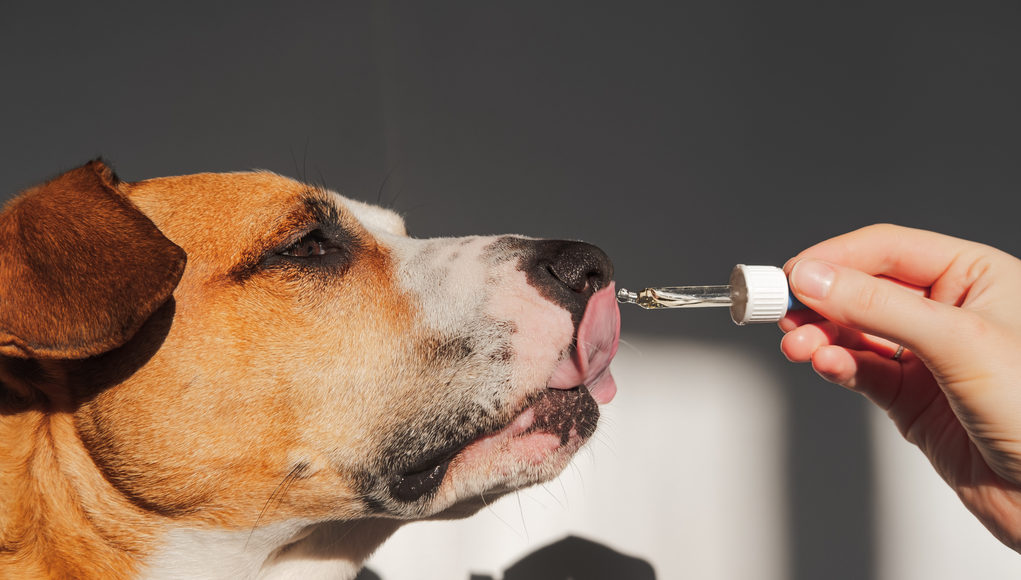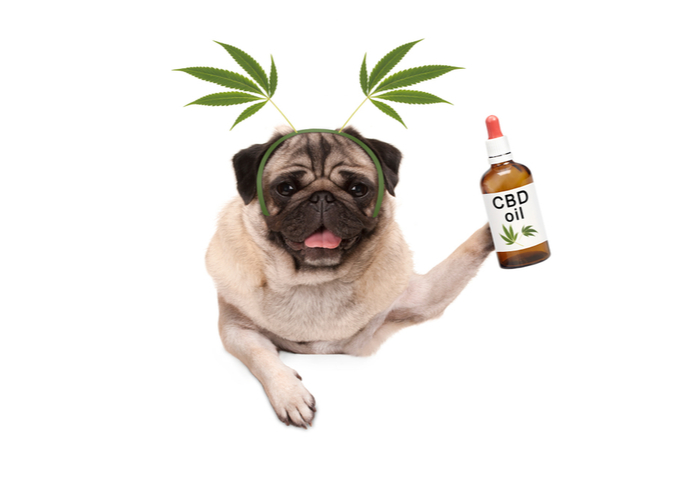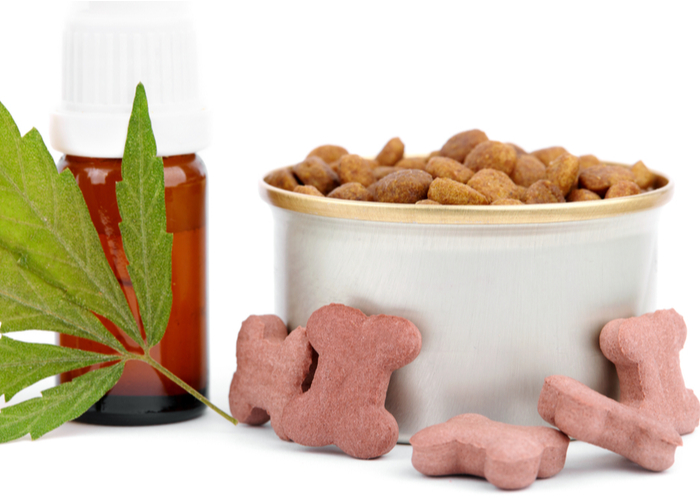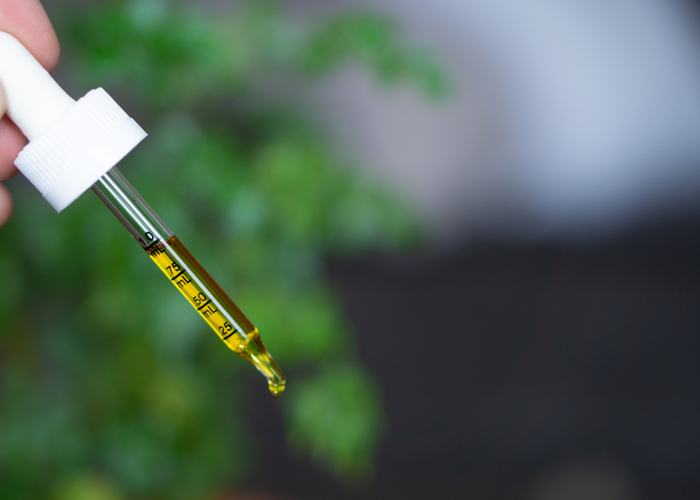Table of Contents
With the usage of cannabidiol for dogs, fur parents and veterinarians are curious whether this can be a great alternative in treating multiple pet health conditions.
CBD from hemp plants is entirely legal in the United States because it is not the same as marijuana that causes intoxication.
This article will discuss the possible side effects of giving cannabidiol to our dogs.
Cannabidiol for Dogs
CBD is a natural compound extracted from the hemp plant. Cannabidiol is one of the 113 cannabinoids found within the hemp plant.
THC and CBD are the most widely studied and used compounds.
Studies about cannabidiol found evidence that it can help treat anxiety, pain, cancer, and arthritis.
The market releases cannabidiol pet products to treat these conditions in dogs.
RELATED ARTICLE: CBD for Dogs – What You Must Know
Types of Cannabidiol Available for Dogs
If your veterinarian recommends cannabidiol for your pet, there are a wide range of CBD pet products available:
- Oils
- Treats
- Topical Products (lotions, creams, gels)
These products are often given by mouth or under the tongue.
Bottled oils are preferable for first-time users of cannabidiol because oils are easier to increase the dose than tablets, capsules, or treats.
RELATED ARTICLE: How to Choose Safe and Healthy CBD Products for Your Pet
What Kind of Health Problems CBD Can Treat?
Data for the treatment of dogs using CBD is still lacking, but according to AKC, dog owners can testify that hemp oil can treat neuropathic pain and control seizures.
Hemp is also for humans because of its anti-inflammatory properties, cardiac benefits, anti-nausea effects, appetite stimulation, anti-anxiety impact, and anti-cancer benefits.
Although, the data of this usage is still lacking.
RELATED ARTICLE: CBD and Dogs: 15 Ways It May Help Your Pet
How To Give Cannabidiol to Dogs?
Pet products for cannabidiol come in many forms. These products include:
- Edibles (chewable treats and capsules)
- Oils (added to food or placed under the tongue)
- Topical creams and balms (applied directly to the skin)
These pet care products have a different effect on the body of dogs.
RELATED ARTICLE: 9 Reasons CBD Is Good for Dogs and How To Give It
Dosage
Make sure to follow the instructions given by your veterinarian regarding the dosage of CBD.
The dosage varies depending on the product.
2 mg per kilogram of the body weight, twice daily to reduce any neuropathic pain.
But if it's the first time your pet takes CBD, it's essential to start with a low dose and increase it slowly, when needed.
For example, you can start with a quarter or half of the dose on the label to see your pet's reaction in small amounts.
If there is no reaction, your veterinarian may recommend that you give another dose of the same amount in 30 to 60 minutes and note the adverse effects.
Since there isn't much research about hemp oil, we still don't know the safest maximum dose for pets.
It's best to discuss with your doctor what is the safest dose to administer to your pet's underlying condition.
Is It Safe for Dogs under Medication?
Cannabidiol can change how some animals metabolize drugs.
Pet owners should first consult about the changes in the dosage if the dog is taking these kinds of medications:
- Steroids
- Allergy Medications
- Liver or Kidney Medications
- Non-steroidal Anti-inflammatory Drugs
- Heart Medications
- Anxiety Medications
How Long Does It Stays on The Dog's Body?
McGrath studies how a capsule, oil, and cream affected how cannabidiol moved through the dog's body.
She measures the pharmacokinetics by giving dogs a single dose of all three delivery methods and then measures different blood levels during the 12 hours.
McGrath then found out that out of the three kinds (oil, cream, and capsule) they tested, oil had the best pharmacokinetic profile.
This result means that oil reaches the highest concentration in the blood, thus, stays in the bloodstream the longest and is the most consistent.
The cream performs more diminutive than the capsule and is too inconsistent to conclude with the results given.
Can Dogs Get High with CBD?
Cannabidiol doesn't cause any euphoric feeling for dogs.
If your pet looks like he is high after one dose, there might be a reason why this is happening.
Before purchasing any CBD pet product, cautiously read the label for information on the specific content of the product.
If the product's description says it is in full-spectrum, this means that the product may contain 0.3% of THC.
This small percentage is enough to cause high feelings for your dog, especially if sensitive to this chemical compound.
CBD for Dogs: Possible Risks
Based on scientific findings, CBD can cause an elevation in a significant liver value in blood work called alkaline phosphatase (ALP).
While scientists are not sure if these findings have medical significance, they may signify that they can cause irritation or damage your pet's liver.
Cannabidiol may also interact with other drugs, e.g., anti-inflammatory drugs. Because there is a risk of drug interaction, it would be best to seek professional help.
Some of the possible side effects of CBD in dogs include:
- Dry mouth – can result in poor dental health, bad breath, and causes pain when swallowing.
- Lethargy – your dog will experience laziness due to large doses of CBD. Try reducing the dosage you give to your pet.
- Dizziness – traces of THC result in trouble standing up or falling over and over again.
- Increased Tremors – increased seizures associated with Parkinson's disease in humans and dogs.
- Itchiness – occurs after taking doses. You may either reduce the dosage or stop it altogether.
- Low Blood Pressure – high doses of hemp oil causes light-headedness, so you may lower the amount to minimize the effect.
- Upset Stomach – anything your dog is not used to taking may cause an upset stomach. High doses of hemp can cause a lot of discomforts.
- Vomiting – stomach discomfort may cause vomiting and may be due to the bitter taste of cannabidiol.
- Diarrhea – if CBD is the reason, you need to reduce the dosage or stop your dog's intake.
- Inhibited Production of Liver Enzymes – affects the metabolism of drugs because of the inhibition, which may lead to overdose as other medications can be potent.
How Long Can Side Effects Last?
The side effects may linger on your dog for a few days, about 3 to 4 days. If the reactions worsen, you should call your veterinarian.
Most effects are dose-dependent, and dogs experience a significant decrease in the frequency and intensity after dosage modification.
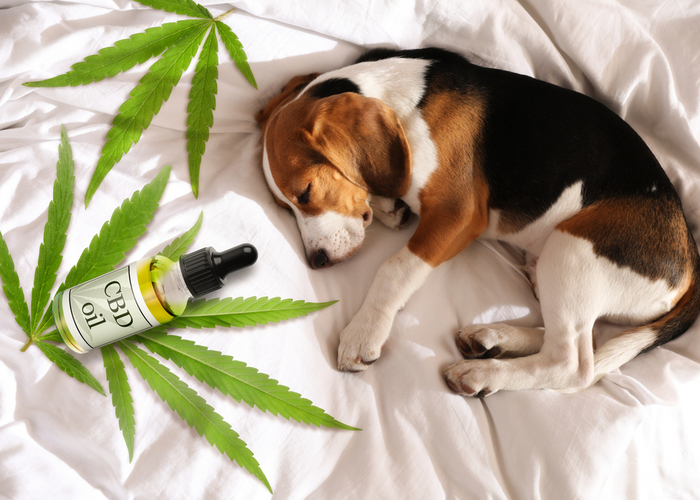
Cannabidiol for Dogs: Takeaway
Today's research about CBD suggests that it helps with several animal health conditions: anxiety, chronic pain, and seizures.
Many pet owners are now switching to cannabidiol because of its excellent results at suggested doses.
The side effects are primarily due to high doses, but they are not deadly. You can adjust the dosage from time to time to minimize the reactions.
If you want to consider giving cannabidiol to your pet, you should consult a veterinarian who has experience treating dogs using hemp.
You can now know how to give CBD to your dogs from then on safely.


